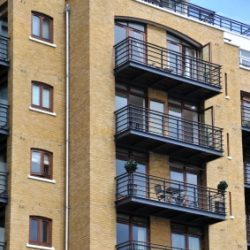
Flats: ‘Relevant building’ has at least five storeys or is at least 11 metres tall
The Law Society is pushing for more changes to the building safety provisions in the UK Finance Mortgage Lenders’ Handbook after one was made last week.
The society said members were concerned that it was impossible to satisfy the handbook’s requirements without “taking on an unacceptable level of risk” and confirming information they were not capable of checking.
The Building Safety Act 2022 (BSA), introduced in the wake of safety concerns for the occupants of high-rise buildings after the Grenfell Tower fire in 2017, came into force in April this year.
We reported earlier this year that conveyancing firms were refusing to handle transactions [1] involving flats in blocks with five or more storeys because of concerns about their liabilities under the legislation.
A ‘relevant building’ under the BSA has at least five storeys or is at least 11 metres tall and conveyancers must now provide mortgage lenders with confirmation that properties meet the requirements of the Act, which covers risks such as fire and structural collapse.
Following lobbying from conveyancers, UK Finance amended the handbook’s wording last week to make it clear that the building safety provisions only applied to relevant buildings.
But the Law Society said solicitors remained worried that “the burden of explaining building safety issues to consumers” sat with them, when they may not have expertise, and about the risks involved in explaining likely service charges and financial liability.
Other concerns were that referring clients to suitably qualified persons – “if they can be found” – would add expense and delays to the process, and that buyers’ solicitors could not verify sellers’ claims that leases qualify for leasehold protection.
For example, they could not check whether a leaseholder qualified because they were unable to check how many properties the seller or the previous seller held as at 14 February 2022
The society said it was “continuing to engage with UK Finance to ask for further changes to the handbook”.
It argued that building safety provisions should only apply where the lender advised in its instructions to conveyancers that the flat was in a ‘relevant building’.
Other changes included requiring the lender to satisfy itself that the flat was in a ‘relevant building’ without the conveyancer having to verify it, and asking the lender to confirm it was not looking to the conveyancer to warrant or verify the validity or status of the leaseholder deed of certificate or the landlord’s certificate.
The society said it had also recommended “technical amendments” to the BSA to help address members’ concerns, including clarifying the status and protection for long leaseholders who have enfranchised since February 2022 and introducing a fixed time limit during which landlords could challenge the validity of leaseholder deeds of certificate.
The society said it was in discussions with the Department of Levelling Up, Housing and Communities and the property industry Home Buying and Selling Group about creating consistent guidance for consumers on building safety issues.
In an update yesterday, the Council for Licensed Conveyancers said: “Much work is under way across the sector to give conveyancers greater confidence in transactions involving properties that may be included in the provisions of the Building Safety Act. We expect to see clarifications and changes in the coming months.”